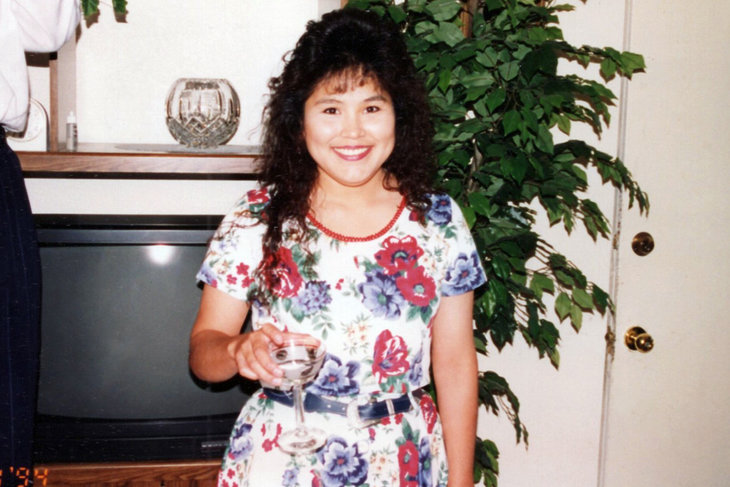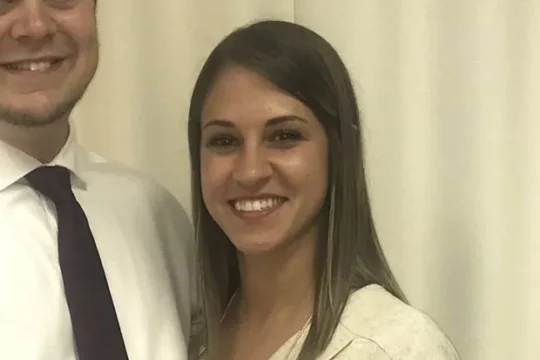
In Anchorage, Alaska, Genevieve “Ginny” Tetpon, a 28-year-old single mother of four, loved her kids dearly. Tragically, her body was discovered in a sleeping bag in a ditch next to a road on March 22, 2000.
According to Alaska Native News, Tetpon was stabbed 30 times in 2013.
According to David Parker, Ret. Lieutenant, Anchorage PD, defensive wounds “indicated that she had fought hard against her attacker” in “Fatal Frontier: Evil In Alaska,” which airs Sundays at 7/6c and 8/7c on Oxygen. But her assailant had succeeded in overwhelming her.
That was who? It took nearly ten years to make the connection between Tetpon and the person who first surfaced during the investigation.
There had been a string of four unsolved murders of Native women in the city starting in 1999. The possibility that a serial killer might still be at large worried both the investigators and the community greatly. Tetpon’s fingernails were collected and processed for DNA evidence, but no suspect could be identified.
Detectives also paid attention to emails that were discovered in a trash bag close to Tetpon’s body. The communications belonged to the Anchorage School District’s Amy Torian. Arthur, her husband, was a pastor and a former Air Force officer. Derrick, their son, was a high school senior.
Amy Torian told police that her car had been looted several months earlier, a robbery that she reported. She assumed the emails had been taken and tossed along the side of the road.
“That explanation seemed pretty plausible,” Slawomir Markiewicz, Ret. Sergeant, Anchorage PD, told “Fatal Frontier.” He added that no connections between the Torians and the victim were found in a thorough follow-up.
The majority of murder victims are killed by people they know, so the focus of the investigation was on Tetpon’s connections. She had recently left the house she and her fiancé Ken Gessler shared before she was killed. The two reportedly argued just before she passed away, according to witnesses.
When Gessler fled, suspicions grew stronger. He was caught after six months and claimed he fled after being involved in a hit-and-run while operating a vehicle without a licence. He was eliminated as a suspect when his DNA didn’t match the genetic material hidden beneath Tetpon’s fingernails.
According to Parker, the investigation was starting over. Another Indigenous woman was murdered shortly after, bringing the total of unsolved homicides to six.
Over eight years passed while Tetpon’s case remained unsolved. When Det. David Cordie was assigned to the investigation in 2009, a lull in the investigation finally occurred. The initial detectives thought the emails found close to Tetpon’s body were taken from the Torians’ car when it was broken into months before the murder in March 2000. A second examination of the evidence revealed that a credit card statement and an email were both from March 2000.
Cordie had to reopen the case due to the discrepancies. Arthur Torian consented to a DNA sample collection and interview. As a suspect, he was dismissed.
Interviews with Derrick Torian were nonexistent. He had two children and was a high school football coach at the age of 27. He consented to police questioning and claimed that his only knowledge of the Tetpon murder was what he had heard on the news. He refused to provide a DNA sample, though.
The denial sent up a warning sign. Investigators interacted with classmates from his high school. According to some female students from his high school, Derrick Torian mistreated the girls and they didn’t want to interact with him.
Derrick Torian’s DNA was subject to a search warrant. The DNA sample was taken by detectives after they approached him once more, Parker said to the camera. Under Tetpon’s fingers and on the sleeping bag zipper, DNA from the suspect was discovered.
An innovation was the DNA match. Police discovered that Derrick Torian had left town when they attempted to apprehend him. He was eventually located and taken into custody in Spearfish, South Dakota, where he was employed as a waiter. He was accused of murder in the first degree.
“After 10 years, the new guy that was working on the case called me,” said Pat Fulton, Tetpon’s mother. “He says, ‘We are arresting him right at this moment.’ It was like the color came back. It was like my shoulders got lifted.”
Derrick Torian provided a statement via his attorney to describe his involvement in the murder. Derrick claimed to have worked at a pizza restaurant in March 2000. At the restaurant, he and Louis de Jesus sold cocaine. Tetpon entered the establishment after it had shut down and found them there with the drugs. Derrick asserted that De Jesus murdered her. He assisted Jesus in getting rid of the body.
His explanation of what happened did not address how Tetpon’s fingernails contained his DNA. De Jesus, who was a victim of an unsolved homicide in 2002, was unable to dispute the allegations.
The trial for Derrick Torian started in July 2013. He was permitted to enter a manslaughter plea and was given a 15-year term.






